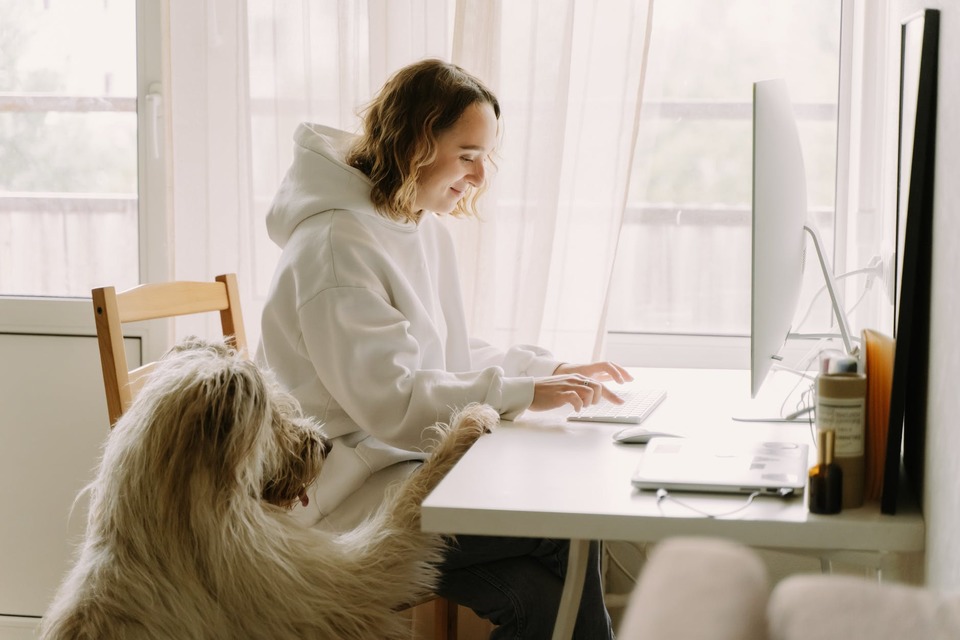

We all know that pets can bring so much to our homes when they arrive, but are we sure we know all about having and caring for a pet at home? We’ve gathered experts in the field that on this Expert Roundup will help us learn more about these topics, and we are sure that it would provide so many excellent tips and advice. Happy Pets, Happy Homes!
To read the entire article visit https://porch.com/advice/having-and-caring-for-pets-at-home-tips-and-advice-from-the-experts
There are many dog training philosophies, but I support positive training methods – rewarding the behavior you want to encourage and ignoring or redirecting the unwanted behavior. Set up a realistic goal of what you want your dog to know, e.g., five primary skills at home or take a test and enroll in a most fitting training program with your dog. Prepare some tasty treats – cooked meat, cheese work for fussy dogs. Many dogs will work for dry kibble as spending time with you is already rewarding.
A few suggestions for successful long-term training:
1. Keep it Short
Remember! Always keep the training sessions short. Make sure to start and end every session with an easy exercise or cuddle session so that your dog is looking forward to the next session.
2. Take it Slow
Be patient. Dogs who were never trained before need time to understand your body language and what is being asked from them. Don’t try teaching them everything on the same day or one after another. Make them get hold of one cue and then move towards the other one.
3. Be Persistent
It is not enough to learn a behavior once. It is important to reinforce it in different environments, with other distractions. If you taught your dog to sit in the kitchen, try it out in your living room, outside, in a dog park. You will see how differently your dog responds. Polish the old commands while adding the new ones to your training schedule.
4. Agree on the rules
Make sure all family members agree on the rule and make them consistent with the dog. If the dog is not allowed to go on the sofa, it should be a strict rule. If your dog is sometimes allowed and usually not, the dog will keep trying to check if today is their lucky day.
5. Give an alternative
If your dog is misbehaving, instead of saying what not to do, tell what to do instead. If your dog keeps jumping on you, don’t simply say “no.” Instead, ask for a sit and when a dog does it, reward with your love and attention.
Rasa | Dogo App
The amount of physical activity a dog requires depends on the breed and age of the dog. Whereas you need to be very careful not to over-exercise your young puppy (no matter what breed), every healthy adult dog should have at least one long walk a day, ideally off lead so they can zoom and sniff about as they wish, or you could use a long training line attached to a well-fitting harness.
You can, and should, also provide plenty of mental engagement daily via positive reinforcement training, puzzle toys, scent games, going on a sniffer around the neighborhood, etc. (20 minutes of cognitive engagement = 1 hour of physical exercise).
Agility classes or enrolling in a trick training course are great ways for you and your dog to work and learn together and try to avoid throwing a ball a million times over. It doesn’t do anything for your dog’s joints and bones and will quickly turn your dog into a ball-obsessed adrenaline junkie.
Alexandra Nelke | Wolfgang’s Way Dog Training & Behaviour
The first step is to meet with the new dog, just you and the dog—no other animals or children. Make sure you and the dog are compatible. Once this is established, introduce other animals and children by way of a meet and greet at the shelter. Both animals should be secured and leashed in case there are aggressive reactions from one or both. Even once the dogs are settled down, still, keep them leashed for a bit in case you need to pull one off another. Once both dogs are settled down, then let them off leash and watch what transpires. By now, most dogs will have adjusted and accepted each other.
Give the new dog 3 days to get settled, 3 weeks to feel secure, and 3 months to feel at home as if they belong. Have patience with a new pet. They need to learn how to fit in.
Barry K. | Halifax Humane Society
To read the entire article visit https://porch.com/advice/having-and-caring-for-pets-at-home-tips-and-advice-from-the-experts
Previous Article
Next Article